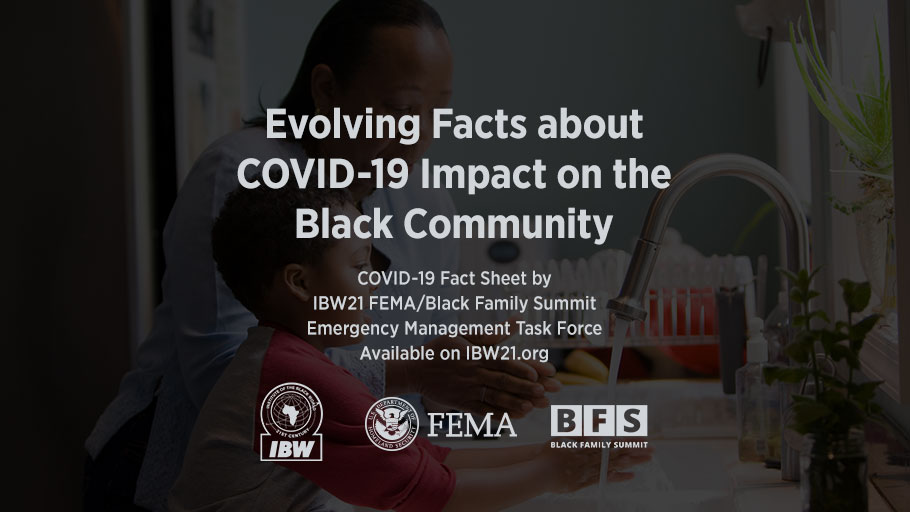Quick Facts
What is Covid 19
Coronavirus disease 2019 (COVID-19) is a respiratory illness that can spread from person to person. The virus that causes COVID-19 is a novel coronavirus that was first identified during an investigation into an outbreak in Wuhan, China.
What is SARS-CoV-2
A severe acute respiratory syndrome, caused by novel coronavirus COVID-19, the second pandemic this century. (SARS 1 pandemic occurred in 2003; 8000 cases with a 10% death rate)
March 11, 2020, the World Health Organization declared COVID-19 a global pandemic affecting every continent on the globe.
March 25, 2020, the United States is the epicenter having the most known cases of the infection. New York City having 25% of the known national cases.
Symptoms of COVID-19
The symptoms of this viral infection can range from no symptoms at all to respiratory failure requiring ventilator assistance. The most common symptoms of known COVID-19 infected people are; fever, cough, and shortness of breath
Incubation Period
The presumed incubation period is 2-14 days. Quarantine protocols recommend isolation for 14 days from time of known exposure or travel from an endemic area (for example travel from NYC, LA, WA)
At Increased Risk
People of any age with chronic illness (heart, lung disease, and diabetes) or states of immune deficiency and those over the age of 65 years
Seek Immediate Medical Attention
- Difficulty breathing
- Persistent pain or pressure in the chest
- New confusion or inability to arouse
- Bluish lips or face
Testing
The criteria for testing have evolved significantly and continue to change weekly (location and availability dependent). A limited supply of test kits and “prolonged waits for test results” dictated a priority platform as follows:
Priority 1
- Hospitalized Patients
- Symptomatic healthcare workers
Priority 2
- Patients in long-term care facilities with symptoms
- Patients 65 years of age and older with symptoms
- Patients with underlying conditions with symptoms
- First responders with symptoms
Priority 3
- Critical Community infrastructure workers with symptoms
- Individuals who have symptoms in endemic communities
- Healthcare workers and first responders
Non-Priority (Containment)
- Individuals without symptoms
In most states, following the above criteria, tests can be sought without approval by a primary healthcare provider.
There is controversy about the use of face masks. Social distancing of 6 feet, should protect uninfected people from asymptomatic infected people (carriers). However, when social distancing of at least 6 feet can’t be assured, some advocate the use of “surgical mask” by untested asymptomatic people, who are in close proximity to asymptomatic infected people. The present shortage of Personal Protective Equipment (PPE) face masks are included in PPE; priority is given to healthcare personnel and then first responders.
Public Health Interventions are the Overarching National Strategy for attacking the pandemic of COVID-19
Harm Reduction through Mitigation
A Community Relations Strategy involves Involvement, Investment, and Partnership.
The component of Investment and its Plan objective is to make profitable investments that address systematic community issues and enable recipients to advance their mission towards resolving the issue at hand. A template may include Issue/Organization, Impact Area, and Investment amount. Example: Impact areas include education, children, safety, homelessness, etc.
The component of Involvement and its Plan objective is to A) provide vehicles through which two-way communication can flow between our family and us. B) Be a visible, vocal participant in the betterment of communities and our service territory. A template could include, Program, description, “What success looks like”, Timeline.
The component of Community Partnership and its Plan objective is to identify and address systematic community issues by facilitating discussion with all stakeholders, aligning community resources and managing the issue through resolution. A template could indicate an issue, desired impact, and partners.
Community Risk Reduction (RCC) is a process to identify and prioritize local risks, followed by an integrated and strategic investment of resources (emergency response and prevention) to reduce their occurrence and impact.
Coronavirus FAQs
Here are some frequently asked questions about COVID-19 (Coronavirus)
FAQ
What is the Stafford Disaster Relief and Emergency Assistance Act?
The Robert T. Stafford Disaster Relief and Emergency Assistance Act is a United States federal law designed to bring an orderly and systematic means of federal natural disaster assistance for state and local governments in carrying out their responsibilities and aid to citizens. Congress’s intention was to encourage states and localities to develop comprehensive disaster preparedness plans, prepare for better intergovernmental coordination in the face of disaster, encourage the use of insurance coverage, and provide federal assistance for losses due to disaster.
FAQ
How long will this last and how will it end?
Dr. William Haseltine, president of the global think tank ACCESS Health International who recently chaired the U.S. Health Summit in Wuhan, where the virus likely originated, has a theory. “There are four ways,” he told The Daily Beast. “One, it peters out with the weather. Two, everybody gets infected, so it’s got no new places to go…so it ends- but that’s a pretty horrible ending. Three is a vaccine, which is about a year away. The fourth way is the most likely: We’re going to have a few drugs, within a few weeks to a few months, that prevent people from getting infected- like PrEP for HIV- and for treatment”.
FAQ
What is social distancing?
Social distancing means keeping several feet of space between yourself and others whenever possible. Maintaining a distance from others will reduce the risk of an infected individual communicating the disease to you. In addition to practicing on an individual basis, it’s a good idea to avoid gatherings involving close contact with others.
FAQ
Steps you can take to help prevent the spread of COVID-19
- Stay Calm. Think carefully about how you can help your community and loved ones.
- Stay at home if you are sick. We want everyone to stay as healthy as possible
- If you believe you were exposed to COVID-19, or have a fever, cough or shortness of breath, call your healthcare provider immediately.
- Cover your nose and mouth when you sneeze. Make sure you use tissues and throw them away in a lined trashcan.
- Avoid sharing household items. This applies to cups, eating utensils, bedding, and towels.
- Disinfect objects and surfaces in your home and at work. Use alcohol-based sanitizer that contains at least 60% alcohol.
- Sleep well. Your immune system is working best if you are well-rested.
- Wash your hands. A lot. Use soap and water for at least 20 seconds and wash often.
- Avoid touching your eyes, nose, and mouth. This helps to reduce the chances of you getting sick.
Coronavirus Myths
Here are some myths circulating about COVID-19 (Coronavirus)
Myth
There’s a coronavirus vaccine out there.
There is no vaccine for the coronavirus currently available. According to the experts at Johns Hopkins: “There is no vaccine for the new coronavirus right now. Scientists have already begun working on one, but developing a vaccine that is safe and effective in human beings will take many months.”
Myth
Ordering products from China could make you sick.
COVID-19 is mainly spread through liquid droplets. So while it’s technically possible that a product ordered from China could house a virus-infected bit of liquid, the odds of that happening are almost impossible. According to Johns Hopkins, “Scientists note that most viruses like this one do not stay alive for very long on surfaces, so it is not likely you would get COVID-19 from a package that was in transit for days or weeks.” So good news: there’s no need to change your online shopping habits.
Myth
A change in temperature can kill coronavirus.
According to WHO, “There is no reason to believe that cold weather can kill the new coronavirus or other diseases.” Similarly, there have been stories that warm weather can kill coronavirus, but those aren’t true either. “The virology of COVID -9 does not diminish in warm temperatures,” Rico Salas-Whalen, MD, of New York Endocrinology previously to Best Life. “Although the virus may have a seasonal cycle, it is not reasonable to expect a huge decline in transmission due to warner weather alone. We see the largest decrease in infections when people refrain from being in locations with poor ventilation and/or large crowds.”
Myth
Taking a hot bath will protect you against coronavirus.
There may be relaxing benefits to a hot bath, but it won’t keep you from contracting coronavirus. “Taking a hot bath will not prevent you from catching COVID-19,” WHO asserts. “Your normal body temperature remains around 36.5*C, regardless of the temperature of your bath or shower.” And for more helpful tips on staying healthy, check out 17 small and easy ways to prevent Coronavirus.
Myth
Bleach, silver, solution, and garlic can protect you from coronavirus.
There are tons of scams that have arisen in the past few weeks, which have led to a flurry of complaints from the Food and Drug Administration (FDA). There have been false claims that drinkable silver, gargling with bleach and garlic soup can help you avoid COVID-19. Long story short, if something sounds too good to be true, then it almost certainly is. Washing your hands and limiting contact with others are still the best ways to avoid getting sick. And for more myths, check out: Holding Your Breath for 10 Seconds Is Not a Reliable Coronavirus Test.
Myth
Mosquitoes can pass coronavirus from person to person.
There is no evidence to suggest that the coronavirus can spread via mosquitoes, according to WHO. “The new coronavirus is a respiratory virus which spreads primarily through droplets generated when an infected person coughs or sneezes, or through droplets of saliva or discharge from the nose.
Quotes of Note
“Time is the yardstick of the measurement of our actions or consequences…We cannot make progress unless there is the presence of truth. And we cannot make progress even with truth, if we are not highly organized.”
– The Honorable Minister Louis Farrakhan
Compiled by
Yusef Muhammad, Former President, International Association of Black Professional Fire Fighters
Dr. Lucy Perez, Former President, National Medical Association
Co-Chairpersons, IBW FEMA/BFS Emergency Management Task Force
Direct Comments and Inquiries to: info@ibw21.org















